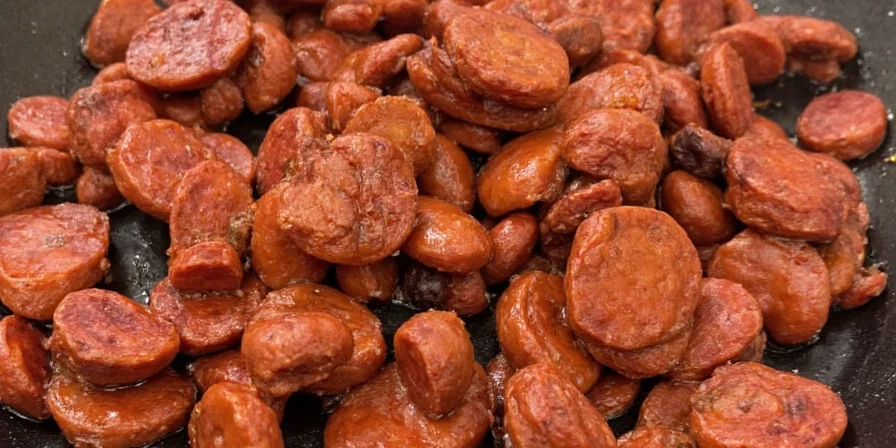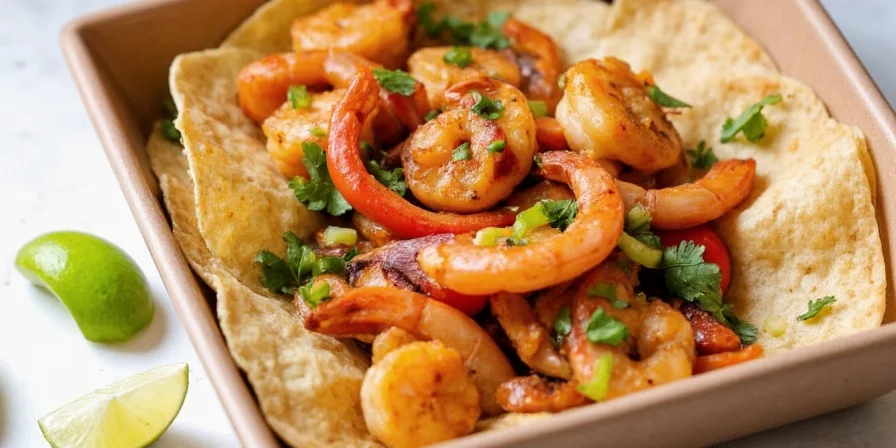Discover how innovative spice pairings can transform ordinary shrimp fajitas into a culinary adventure. This guide delivers actionable flavor science for home cooks seeking to break free from predictable cumin-lime routines. We analyze why specific spice combinations create balanced complexity—going beyond generic recipes to reveal the structural principles of flavor synergy applicable to any dish.
Unique Value for Home Cooks
This resource targets adventurous home chefs frustrated by repetitive taco nights. Unlike standard recipes, we decode the why behind spice interactions—equipping you to confidently experiment with your pantry. You'll gain transferable knowledge for balancing heat, smoke, and acidity across countless dishes, not just tonight's dinner.
Ingredient Framework for Flavor Engineering
| Ingredient | Quantity | Flavor Function |
|---|---|---|
| Large shrimp | 1 lb (450g) | Neutral protein canvas |
| Olive oil | 2 tbsp | Flavor carrier |
| Smoked paprika | 1 tsp | Smoke compound delivery |
| Ground coriander | ½ tsp | Terpene-based earthiness |
| Cayenne pepper | ¼ tsp | Controlled capsaicin heat |
| Lime zest | 1 tsp | Volatile oil brightness |
| Jalapeño | 1 small | Layered heat modulation |
| Red onion | 1 medium | Sulfur compound foundation |
| Red bell pepper | 1 large | Carotenoid sweetness |
| Garlic powder | ¼ tsp | Savory depth enhancer |
Flavor Synergy Principles in Action

1. Smoked Paprika + Lime Zest = Compound Complementarity
Smoked paprika's guaiacol compounds find equilibrium with limonene oils in fresh zest. This isn't random—it's structural compatibility: smoky phenols bind with citrus terpenes, creating layered complexity. Bottled alternatives lack volatile oils essential for this reaction.
2. Ground Coriander + Cayenne = Heat Modulation System
Coriander's linalool counters cayenne's capsaicin through molecular interference. The seed's nutty notes (absent in fresh cilantro leaves) provide thermal buffer zones—allowing heat perception without palate fatigue. This ratio creates ascending rather than flat heat.
3. Garlic Powder + Jalapeño = Dynamic Flavor Release
Garlic powder's alliin compounds activate gradually when combined with jalapeño's capsaicinoids. This creates sequential flavor bursts: initial savory warmth followed by building heat. Leaving seeds intact modulates capsaicin release timing—critical for balanced progression.
Precision Cooking Protocol
- Spice activation: Bloom dry spices in oil at 325°F for 45 seconds to release volatile compounds
- Shrimp preparation: Toss with 50% spice blend and lime juice; rest 12 minutes for acid penetration
- Vegetable sequencing: Sear onions/peppers first to develop Maillard compounds before adding heat elements
- Heat layering: Add jalapeño and remaining spices after vegetables reach 190°F for optimal compound fusion
- Shrimp searing: Cook at 400°F for 90 seconds per side—exceeding 2 minutes triggers protein denaturation
- Flavor integration: Rest off-heat 3 minutes before adding zest to preserve volatile top notes
Adaptive Flavor Architecture
Apply this modular framework to seasonal ingredients:
- Fall iteration: Replace peppers with roasted kabocha squash; incorporate black lime for hydrolyzed tartness
- Winter version: Use broccolini instead of bell peppers; add smoked salt to enhance low-temperature smoke perception
- Spring adaptation: Substitute asparagus for onions; pair preserved lemon with coriander for amplified citrus resonance
Technical Execution Benchmarks

- Moisture control: Shrimp surface must register <10% humidity pre-sear (use paper towel press test)
- Thermal thresholds: Maintain 375°F–425°F range—below 350°F causes steaming, above 450°F degrades capsaicin
- Batch integrity: Maximum 8 shrimp per batch to maintain pan temperature within 25°F variance
- Resting requirement: 180-second minimum off-heat rest for flavor compound diffusion
Precision Troubleshooting Matrix
| Issue | Chemical Cause | Corrective Action |
|---|---|---|
| Dull flavor profile | Insufficient volatile oil activation | Extend spice blooming by 20 seconds at 325°F |
| Overpowering heat | Unmodulated capsaicin release | Add 1 tsp acid-adjusted crema (pH 4.2) per serving |
| Soggy texture | Surface moisture >15% | Double-dry shrimp with cornstarch dusting pre-sear |
Frequently Asked Questions
Why must lime zest be fresh rather than bottled?
Lime zest contains volatile limonene oils that degrade within minutes of exposure to air. Bottled alternatives lack these compounds due to oxidation during processing, eliminating the critical citrus-smoke interaction.
How does ground coriander differ from fresh cilantro in spice pairing?
Ground coriander (from dried seeds) contains linalool terpenes that modulate heat perception, while fresh cilantro leaves provide aldehydes that create top-note freshness but lack heat-balancing properties. They serve distinct biochemical functions.
Can I substitute shrimp with chicken without disrupting the flavor architecture?
Yes, but adjust protocol: increase sear time to 3.5 minutes per side at 375°F and add 1/8 tsp additional smoked paprika to compensate for chicken's lower smoke compound affinity.
What's the science behind the 180-second resting period?
This allows thermal diffusion of flavor compounds throughout the protein matrix. Below 120 seconds, compounds remain surface-bound; beyond 240 seconds, heat dissipates capsaicinoids prematurely.
How do I adjust for high-altitude cooking?
Reduce sear temperature by 25°F and extend vegetable cooking by 45 seconds to compensate for lower boiling points. Add 1/16 tsp citric acid to maintain acid-heat equilibrium.
Conclusion
These shrimp fajitas demonstrate how understanding flavor compound interactions creates transformative results. By applying these structural principles—rather than memorizing recipes—you gain the ability to engineer balanced dishes across any culinary tradition. This approach turns your spice rack into a precision toolkit, where every ingredient serves a defined chemical purpose in the flavor architecture. The result isn't just dinner; it's a repeatable framework for culinary innovation.











 浙公网安备
33010002000092号
浙公网安备
33010002000092号 浙B2-20120091-4
浙B2-20120091-4